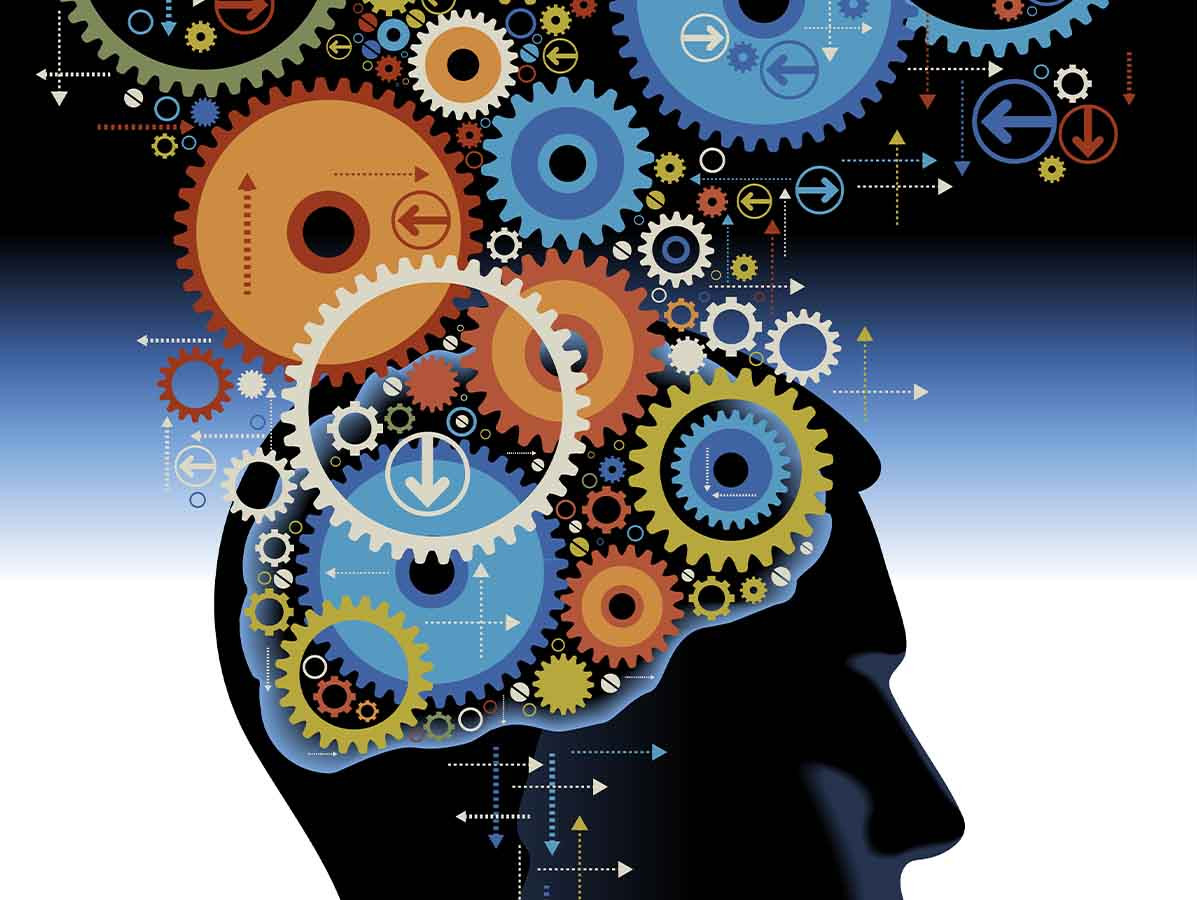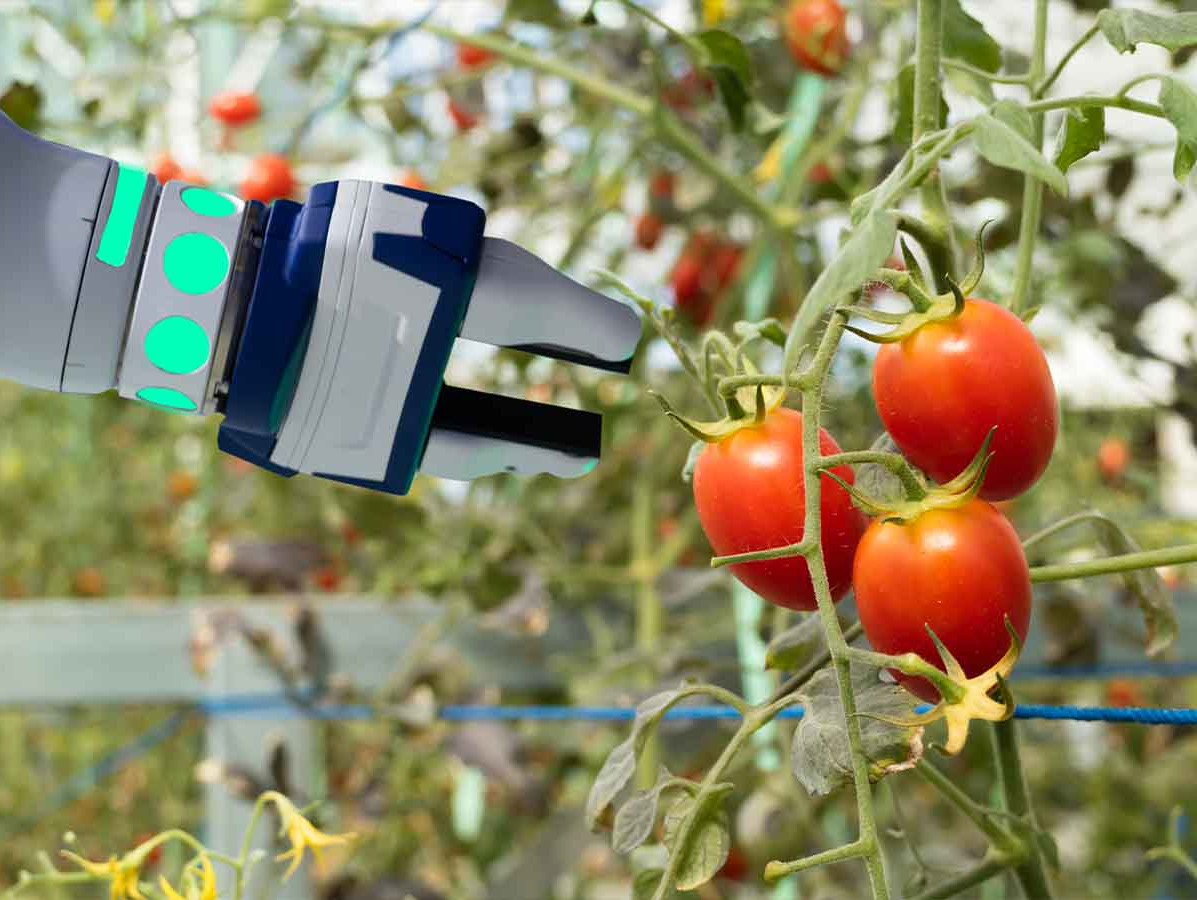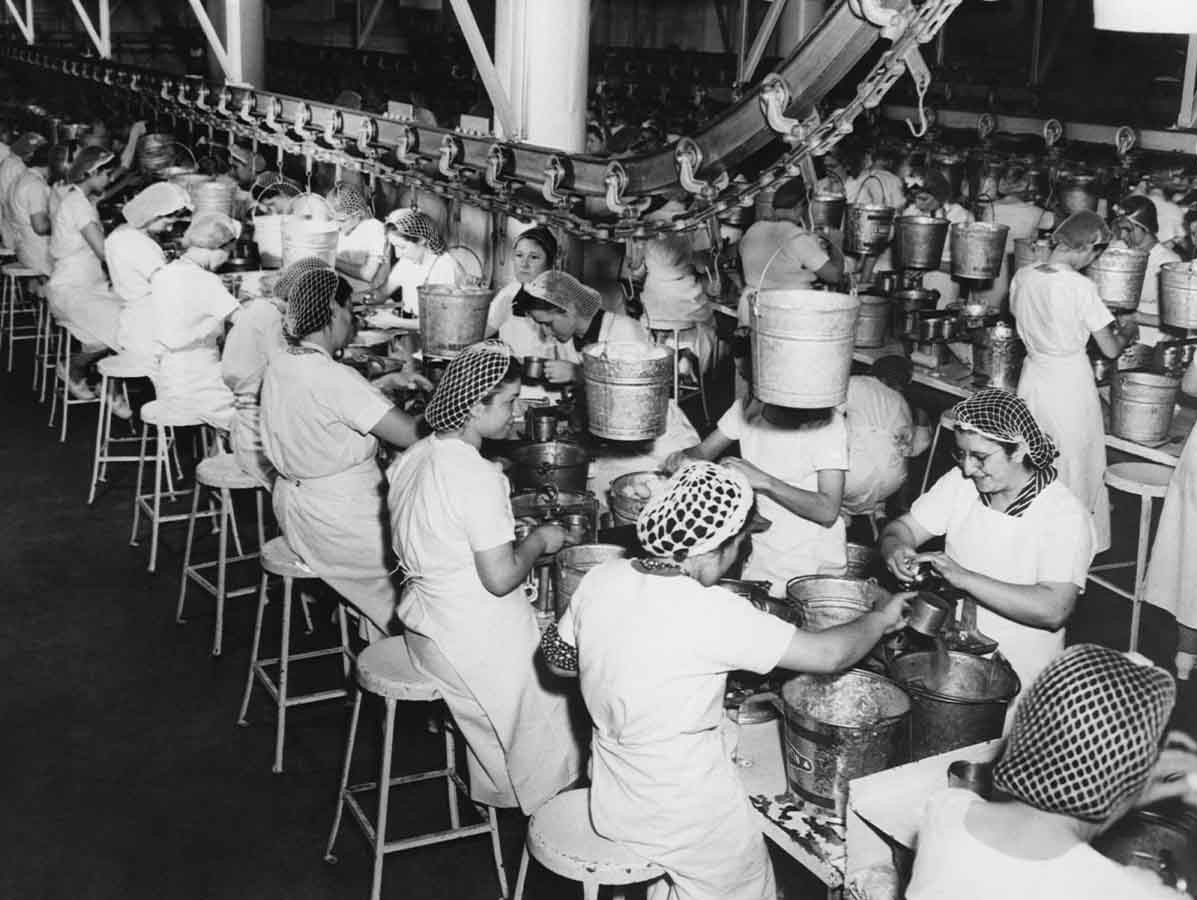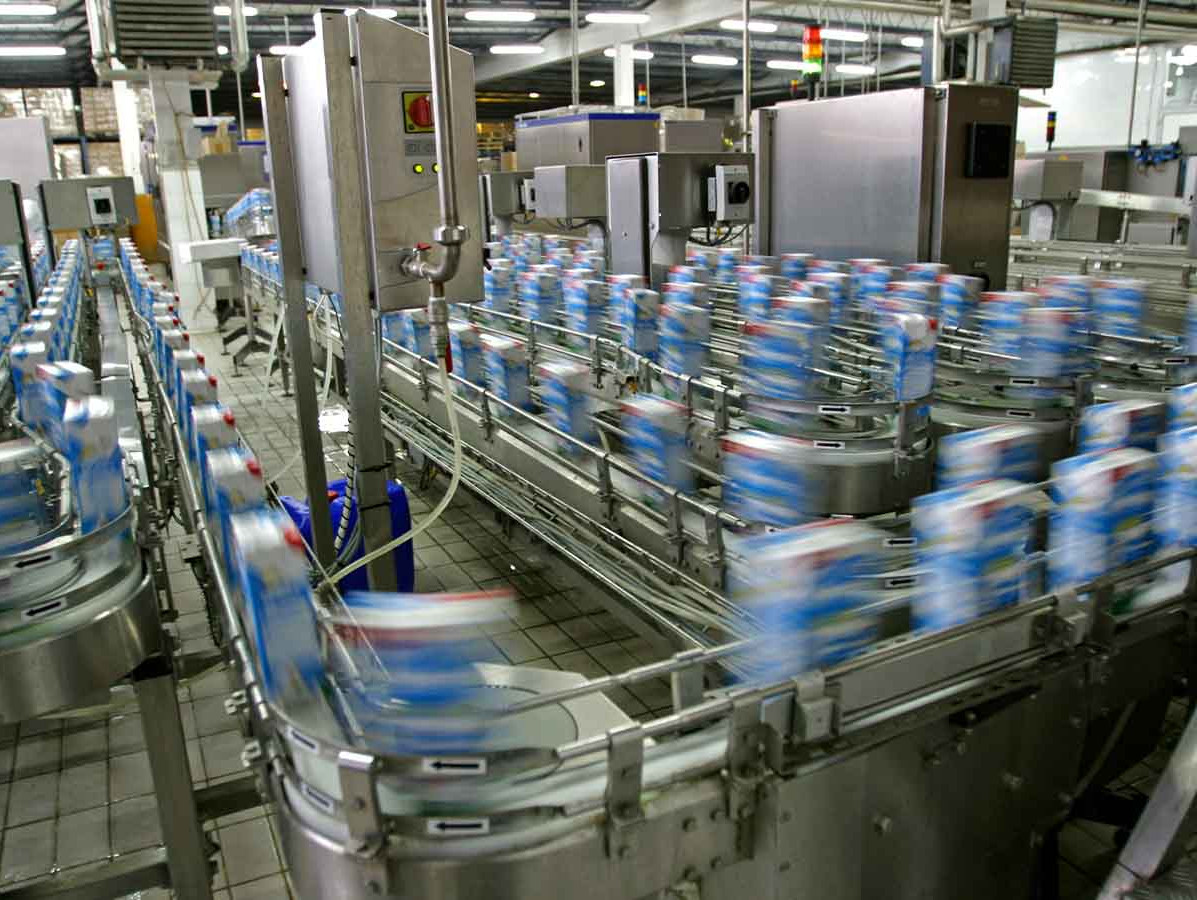
Internationally, the Netherlands is considered to be an excellent hub for technological innovations. According to the Digital Transformation Scoreboard, one in three Dutch businesses is highly digitalized. In the field of robotics, we rank significantly high. However, the report, ‘Leap Forward Agenda 2022-2026,’ emphasizes that actions are necessary to maintain this Dutch strength. So, what needs to be done?
'Discover what can be done better, more efficiently, and more smartly.'
Globally, the number of installed industrial robots is increasing steadily. 2023 marked a record growth, with over half a million robots introduced in a single year, as indicated by the ‘World Robotics Report 2023’ from the Industrial Federation of Robotics (IFR). The food and beverage industry ranks third globally in factory automation, with a market share of roughly 19%. The processing industry leads with a 25% market share, followed by the automotive sector.
However, Dutch regions aren't leading in the development of Industry 4.0 technologies like AI, digital twins, and machine learning. Recent research from the Dutch government indicates this. Even in robotics, there's room for improvement. The IFR, which annually measures robot density per 10,000 workers, indicates that the Netherlands ranks 13th globally with 209 robots per 10,000 employees. Although this is significantly above the global average, the Netherlands dropped two places last year.
It’s time to probe three Dutch specialists in the ‘Smart food manufacturing’ field. What are the current trends, pitfalls, and challenges in robotics, digitization, and automation? Joining the conversation are Coen Suurmond (software specialist and owner of Cesuur), Theo Bruinsma (chairman of GMV, the association of Dutch manufacturers of food industry machinery, packaging machines, and biobased systems), and Suzanne Verboon (program manager for Agriculture, Water, and Food at the FME, the entrepreneurs' organization for the technology industry).
"Robotics and digitization are seen as significant drivers for growth in labor productivity. However, investments in R&D in the Netherlands are considerably lower than in other knowledge nations. This hinders growth," Suzanne Verboon illustrates. She's also a lead in the NXTGEN HIGHTECH program, which, with support from the National Growth Fund, collaborates with over 60 parties from the industry and knowledge institutions on new high-tech machines and production technologies. The aim? To boost sustainable economic growth. "Our goal in Agrifood is to further the sustainability of the food chain through the application of technologies like AI, robotics, and vision," Suzanne explains. "We are working on projects, encouraging collaboration and sharing knowledge, which gives us both national and international impact."

Suzanne: “A significant driver for innovation is the desire and need for more sustainable production. Efficient food production is essential to meet global sustainability goals. Water is becoming scarce, land is already scarce, and energy is relatively expensive. Add issues like labor shortages, high labor costs, and demanding consumers unwilling to pay more for their food. As technology becomes cheaper, its application becomes more accessible to smaller companies.”
Theo Bruinsma: “For businesses, investments should always lead to improved returns, more efficiency, and cost reduction.”
Coen Suurmond adds, “The desire and legal obligation – think of track and trace and transparency – to maintain product information is also a crucial driver for digitization and automation. An added bonus is that data collection provides insights into your process. The more accurately you understand what's happening in production, the better you can manage it. It allows for quick adaptability and prevention of production loss.”
“Many innovations focus on that last point, stemming from the zero-waste principle,” Theo emphasizes. “In the Netherlands, a quarter of our food is wasted annually. In the U.S., 40% of produced food ends up untouched in the trash. The world can't sustain this. One innovation addressing this issue is the smart sensor technology that enables dynamic shelf-life data for packaging.”
'The indicator’ from Norwegian company Keep-It Technologies is a great example of this technology. The NVWA and the Ministry of Health, Welfare and Sport have granted this company a two-year opportunity to test the time and temperature indicator on food stuffs in collaboration with a manufacturer.
Coen: "Often there's a push from the supplier, rather than a pull by the customer. The supplier has a new software package or new machine line, and will tell you why it's valuable to your company. My advice: if you want to take digitalization and automation a step further, take a step back first. Look closely at your core process and how it works. Analyze what's going well and what isn't. Know where you want to go. It helps tremendously to have employees manually carry out that process again. See what you encounter and where you run into issues. This ensures that no essential aspects of the primary process are overlooked. Moreover, you kill two birds with one stone. Those who will soon be working with it get acquainted with the new methodology and have a say; this creates support. And you eliminate errors in the program before they become operational disruptions."

Coen: "Always in the details. Computers are logical machines in a structured model world. Reality is always different. Unforeseen problems arise. For a slaughter or meat processing line, for instance, you must be able to clearly, reliably, and quickly identify what each piece of meat in production and inventory is and from which batch it originates. Whether you're a robot or a human. The basic principle is that the operator at a registration point knows what he's dealing with. But if he can't see the difference, he can't input reliable information. So, either the human needs training or additional information to work properly."
Continuing, Coen says, “The average IT professional and manager are accustomed to thinking in models, generalities, and rules. But the employee in the primary process deals with concrete physical reality. They must address explicit problems on the spot, as the production line continues. Often, neither understands the other's role or its importance. They truly view the process from different perspectives. The challenge then is to extract the exact information needed to manage and adjust processes within an organization. To do this, you must know and communicate what's required for your task. You should also be aware of the roles and responsibilities of every link in the chain. What data must the process yield? What sources of information do you need to execute the process? Practically speaking, to use the earlier example: how does the employee on a pork processing line recognize the difference between organic and IKB? The answer: "We place two hams crosswise on the conveyor belt. Not just one because that could be coincidental. With two hams placed crosswise, we know: this is a batch division." It's that simple. But it requires thought."
Suzanne: “Definitely. A human in a factory can do many things simultaneously; we shouldn't underestimate that. They don't just turn a cheese over, they simultaneously perform a quality check. If they pick a tomato, they instantly see if the plant is healthy and check for pests. A lot of technology is needed to replicate these tasks, ensuring a robot has the same functionalities as a human.”
Coen: “That reminds me of a story about a small niche-product manufacturer. His accountant thought it more efficient to outsource transportation. But the manufacturer disagreed. ‘My drivers visit my clients several times a week. They chat, see how stocks are, and note the trucks of competitors. They provide me with information much more valuable than what an account manager, visiting thrice a year, could offer. The latter doesn’t see the production side of things.’”
Theo: “Absolutely. Placing people in key positions within your production process is the wisest move currently. The Pareto principle applies here; the 80/20 rule. 80% of results come from 20% of the input. Conversely, replacing the remaining 20% of work costs 80% of your time, money, and energy.”
“You truly need people on the production floor to assess uncertainties,” Coen adds. “If you over-rationalize a process, removing the individuals with knowledge, risks increase.”

Theo: “The trick is making technology very straightforward. Globally, people don't benefit from understanding the whole machinery; they should just be able to work with it. Machine manufacturers are also legally required to train those who'll operate their equipment, ensuring safe and responsible use. With ongoing upgrades and updates, that responsibility never ends. The Machinery Directive is constantly updated. Although bureaucratic processes are slow, they never stop. Legislation isn’t static. A revision is always in the pipeline, keeping guidelines current. Suddenly, it’s there. And you must read very carefully!”
Coen agrees, “There’s a continuous interplay between market demand, the government, and what’s technologically and practically feasible. When a company demonstrates something works, the next step often is to make it mandatory. It's a mix of business and supply chain interests. The challenge now is that growing complexity seems to blur responsibilities. Strictly speaking, whoever approves an IT system for real-world use is accountable for the consequences.”
He continues, “Every system’s principle should be: 'You have to be able and capable to adopt or adapt the outcome.' In other words, possess the knowledge, skills, and ability to approve something. In this scenario, the operator assumes responsibility. Crucially, they should also have the ability to decide ‘no, this isn’t right, it needs adjustment.’ Sadly, many knowledgeable individuals feel trapped by systems that don’t allow autonomous decision-making.”
Suzanne: “We aim to safeguard, maintain, and expand innovation in the Netherlands. We must preserve an ecosystem of development and innovation. This ecosystem is threatened. We face growing competition from other regions, and politics sometimes oversimplify priorities.”
“It’s like having a train and removing wagons 2, 4, and 7, expecting the train to run smoothly. That won't work obviously,” Theo interjects. “It's an interconnected system. The primary sector could probably slow down a bit, but now it’s becoming more like harassment. That’s not the way to do it. We must retain good, modern agricultural businesses. They're the foundation of the robust Dutch Agrifood sector. Politicians often don’t seem to realise this.”
Suzanne: “Dutch companies are a crucial link in global food production. Our products and machinery are everywhere. This means responsibility. Through FME projects, we want to challenge the food processing industry to collaborate more and invest in the entire food chain's sustainability. For example, technology development for using plant-based protein sources. The protein transition is a significant innovation driver; shifting to a diet with fewer animal proteins only works if we can provide tasty alternatives. This requires technology. It’s essential to have this technology locally, not relying on others.”
“Pushing forward isn't a punishment, it’s a necessity for survival and life,” says Theo. “Use it, benefit from it, understand it, embrace it. Don't view it as an enemy, or it will become one.”
“To food processors, I'd say: consider what you can change, explore what can be done better, more efficiently, more smartly,” concludes Suzanne. “So much is possible, so reap the rewards. Let's be proud of our advanced technological position! I also hope there will be more curiosity about the possibilities. While technology isn't the answer to all challenges, it can contribute to a healthy future for the food sector.”
Source: Vakblad Voedingsindustrie 2023